Representing nearly 2,000 airports in 183 countries, trade body ACI World and its five ACI regions have set a global commitment to reach net zero emissions under the direct control of airport operators. ACI said airports were an integral part of the response to climate change, recognising that each airport, country and region was different, and the long-term aspirational goal was intended to be adopted by individual airports in accordance with local conditions to a timeline towards net zero by 2050 “that works for them”. To reach the target, airports could not do it alone, said ACI World Director General Luis Felipe de Oliveira, and they needed to work closely with the wider aviation community and count on the support of governments and key stakeholders. The long-term goal was agreed after a feasibility study conducted by ACI World with consultants ICF and Airbiz. A net zero by 2050 goal has already been committed to by 238 airports in Europe, with 91 airports pledging to achieve net zero by 2030.
“The aviation industry’s permission to operate and grow will only be granted when the communities we serve are an integral part of the work that airports, the wider aviation community and governments are doing, together with proactive climate action which is even more critical in the recovery efforts from the pandemic,” said de Oliveira, launching the net zero goal.
The long-term goal is in response to the IPCC’s Special Report in 2018 and after a group of airports urged ACI and its World Governing Body (WGB) to support airports taking urgent action by establishing an ambitious carbon goal commensurate with the report’s call for drastic reductions in global carbon emissions in line with the Paris Agreement. At a meeting in October 2019, the WGB agreed to support and commission a study, with ACI World appointing in February 2020 ICF and Airbiz to undertake it.
The purpose of the study was to:
- analyse the feasibility of a global decarbonisation by 2050 goal for ACI member airports;
- develop alongside the goal the appropriate pathway, resources and costs required to achieve it, considering regional differences and challenges faced by different airports based on size, geographic location, political circumstances and other differences; and
- identify the challenges that airports will face in different regions and make recommendations at a sectoral level as to how they might be overcome.
The study found that although Covid-19 had significant consequences for the aviation industry, including a recovery that is likely to result in an uneven resumption of airport investment, it had not derailed the commitment by most airports for lasting decarbonisation.
“The continuing and increasing focus on climate change and sustainable recovery lend further support to the value of a shared, credible and ambitious carbon goal for airports, led by ACI, as a driving force in the aviation sector,” says the study.
The goal is limited to scope 1 and scope 2 carbon emissions for which the airport operator is directly or indirectly responsible, so excludes emissions from aircraft operations, and is aspirational.
“It is not for ACI to enforce but rather will be a goal adopted by individual airports on a voluntary basis,” said the trade body. “ACI, in consultation with its regions and global membership, will review and update the goal every five years, to reflect latest policy, regulatory shifts, technology advancements, market conditions and scientific evidence, as well as public and stakeholder experience and expectations.”
In accounting for regional differences, the study acknowledges various roadmaps will be required to accommodate the diversity of the global airport membership, which are at different levels of carbon management maturity with different challenges, drivers and opportunities.
“The sectoral goal supports the faster and more ambitious goals already adopted by some members, while also reflecting that for some airports, meeting the net zero goal will prove challenging,” finds the study.
Kata Cserep, Global Managing Director for Aviation at ICF, told a webinar hosted by ACI World to launch the long-term goal: “It’s important to stress that it’s a common global goal but not the same goal for every airport. Our research and engagement with airports show very different journeys being experienced. There are airports who are already close to achieving net zero today but for numerous others, the decarbonisation journey has only just begun.”
In line with the IPCC reference point, the study established a 2010 baseline of 18.6 million tonnes of CO2e (Mt CO2e) emissions attributable to the global airport sector, with 10.3% of emissions from scope 1 sources and 89.7% from scope 2. Between 2010 and 2019, the absolute level of scope 1 and scope 2 emissions decreased slightly to 18.4 Mt CO2e, despite significant traffic growth. With activity expected to increase again post-Covid, if no further action is taken by airports, scope 1 and 2 emissions are forecast to rise to 24.9 Mt CO2e by 2050 on a business as usual (BAU) projection. Despite the impact of the pandemic, global airport traffic will continue to increase and is predicted to reach over 20 billion passengers by 2050. This is an activity increase of 150% with an expected emissions increase of 33%, but although this represents further decoupling of traffic and emissions growth, it still falls significantly short of the IPCC’s recommended 1.5 degree global warming mid-century limit, suggests the study.
The greatest source of carbon emissions for most airports is from purchased electricity generated off-site and reducing the carbon intensity of the electricity grid is outside the direct control of the airport operators. For other sources, the availability of finance, supportive business models and mature technological solutions will be required, it says.
It has come up with three emission reduction pathways, translated into interim reduction milestones for 2030, 2040 and 2050. A range of scenarios are defined through emission reduction measures (see figure below) and grid decarbonisation scenarios were developed bottom-up to compare to these outcome-driven emissions reduction pathways and test the technical feasibility of each pathway. No scope is allowed for carbon offsetting in the study and if emissions cannot be reduced to zero then only absolute reductions, or removals, through negative emissions technology are permitted by 2050, said Cserep.
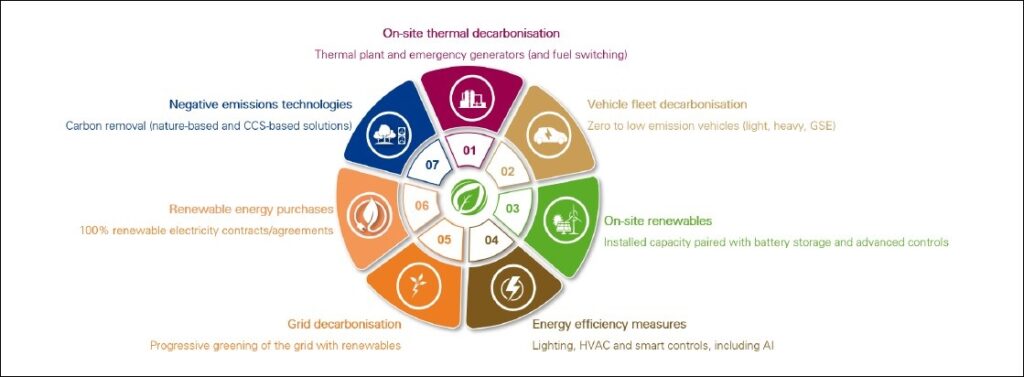
To achieve the net zero goal will require shared policies and collaboration with industry, government and other stakeholders, and the study’s authors recommend seven actions and next steps for ACI to consider implementing:
- Adopt common goals amongst ACI member airports and reassess their feasibility periodically;
- Establish a voluntary mentorship programme;
- Develop an engagement strategy and toolkit;
- Develop a voluntary Airports Action Plan;
- Organise a biennial low carbon airport symposium;
- Support cost-benefit analysis studies to incentivise innovative business solutions; and
- Establish a global sustainable airports roundtable.
Governments and other stakeholders should play their part by:
- Supporting global grid decarbonisation;
- Supporting renewable energy transitions and the development of viable business cases and partnerships for decarbonisation measures;
- Supporting the development of negative emissions technologies commercial development as a gap filler; and
- Incentivising and facilitating airports’ access to green finance.
“The sustainability of the whole aviation sector is crucial for the present and future of the industry, it is our passport for a return to growth, and the industry has invested billions in measures and practices which have made significant progress in reducing its environmental impact,” said de Oliveira. “Through a combination of new technology, operational efficiencies and infrastructure improvements, more than 10 billion tonnes of CO2 have been averted by the industry since 1990, but we must build on this and accelerate our collective efforts to decarbonise.
“Airports cannot do this alone, however, and this is just the first step. If they are to realise this ambitious target, they must work closely with the wider aviation community and count on the support of governments and key stakeholders to address, minimise and mitigate the environmental impacts of continued aviation growth over the long term.”
Added Ken Conway, Head of Environment and Sustainability at Airbiz: “The cost of delaying action or doing nothing could be extremely high and what we want to avoid is the imposition of more aggressive carbon pricing initiatives, restrictive regulations and possible limits to growth. We have a unique opportunity to show we can really lead in the global response to climate change and join a growing community of states and other industries that have also taken similar steps. By aligning our net zero carbon goal to a pathway that is compatible with the Paris Agreement and the latest science, and by embracing all the opportunities to decarbonise the sector, we stand to benefit at all levels and continue to be seen to play a very important role in limiting a rise in global temperatures.”
Top image: ACI World
Webinar on ACI World’s global long-term carbon goal for airports:



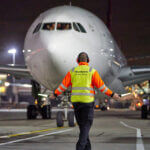




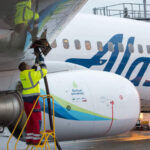
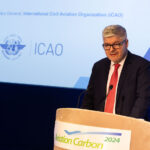



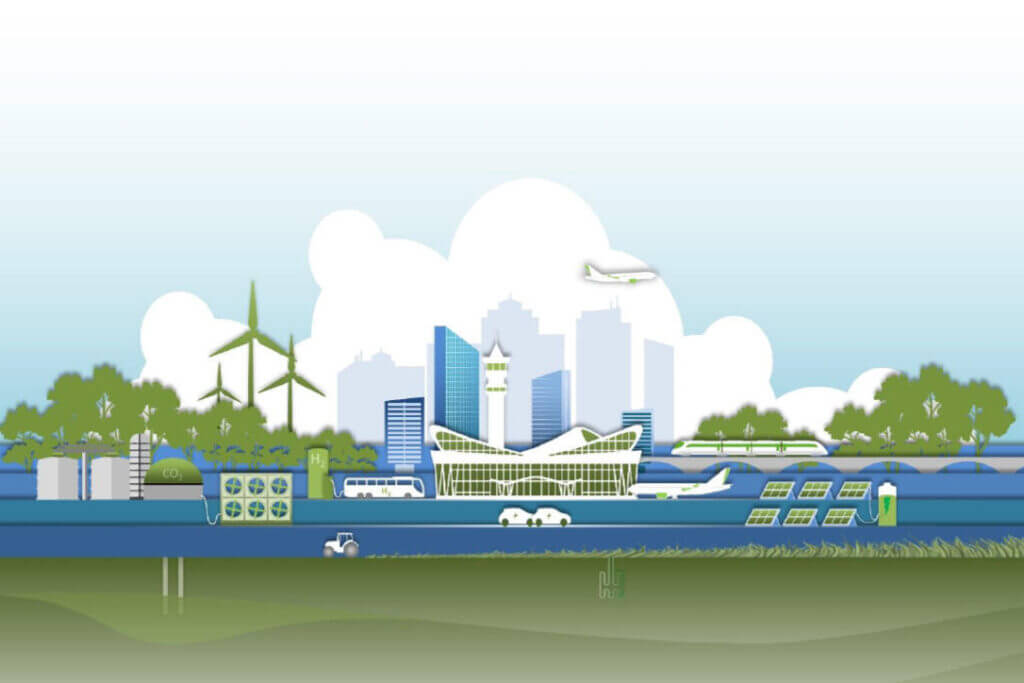

More News & Features
ICAO signs agreement with IRENA to boost finance opportunities for SAF production
Cambridge report sets four goals to be implemented by 2030 for global aviation to reach Net Zero
French airport group ADP and Microsoft climate fund invest in SAF producer LanzaJet
British Airways in multi-million-pound energy transition to reduce Heathrow ground emissions
Inclusion of SAF in new climate legislation for EU cleantech industry welcomed by aviation sector
Studies say Amsterdam’s Schiphol Airport must cut emissions over 30% by 2030 and cap demand